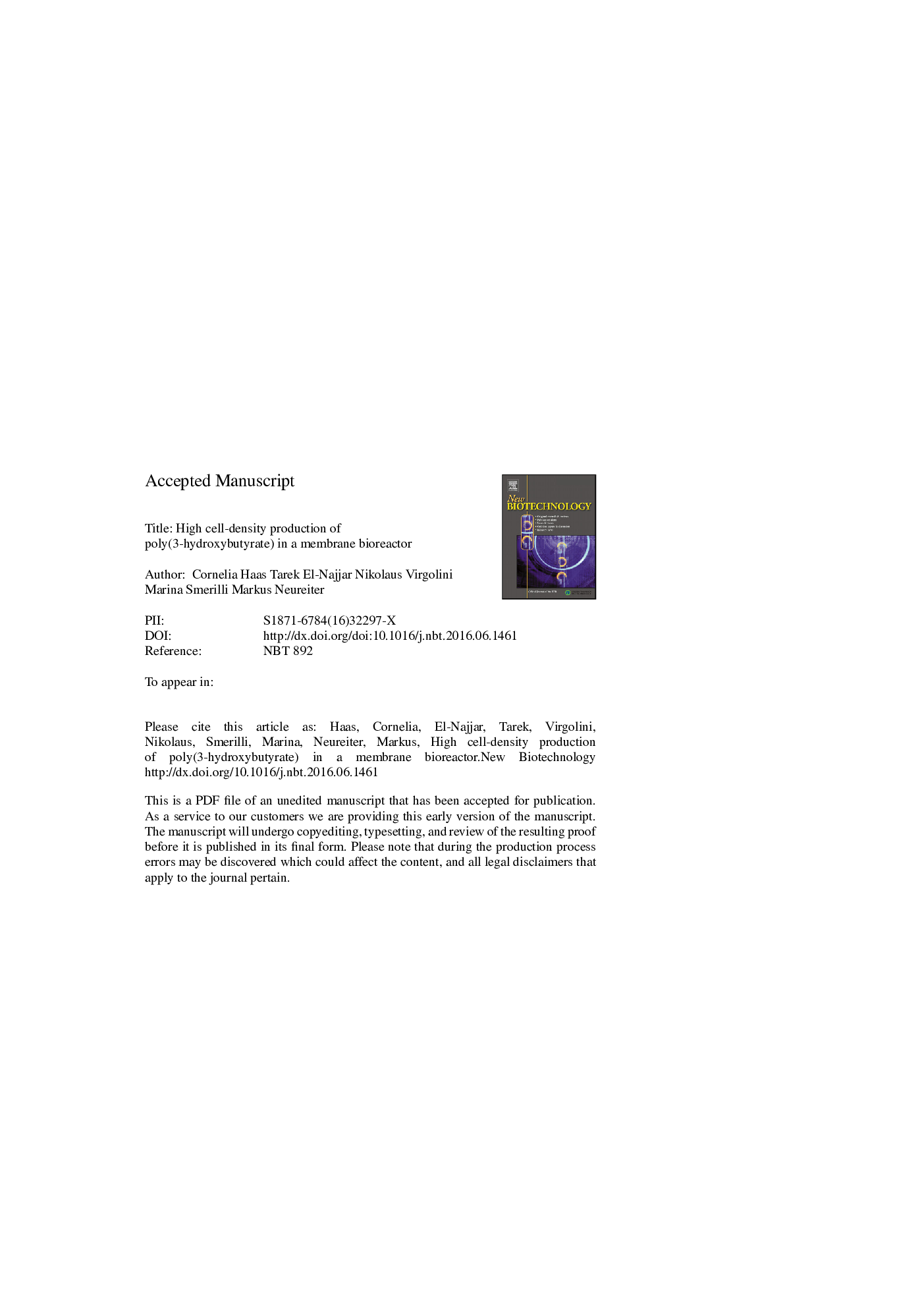| Article ID | Journal | Published Year | Pages | File Type |
|---|---|---|---|---|
| 4754945 | New Biotechnology | 2017 | 17 Pages |
Abstract
Agro-industrial residues with a low carbon content, such as whey, stillage or wastewater from plant oil mills are abundant and cheap. However, they cannot be used directly in highly productive industrial poly(3-hydroxybutyrate) (P3HB) production, as the classical fed-batch fermentation strategy requires highly concentrated feed streams. This problem has been circumvented in this report by retaining the cells during the fermentation in the bioreactor using an external microfiltration module. Synthetic medium containing a glucose concentration of 50Â g/L was continuously fed to Cupriavidus necator, which converted the sugar to P3HB. With this setup we were able to achieve high productivities (3.10Â g P3HB/(LÂ h)) and reach high cell densities (148Â g/L) containing 76% P3HB, and obtained good yields (0.33Â g P3HB/g added glucose). The added sugar from the feed was instantly consumed by the bacteria, resulting in a negligible loss of sugar to the permeate. This approach creates the possibility of polyhydroxyalkanoate production from a range of cheap and easily available substrates, for which only waste water treatment or biogas production has been cost-competitive until now.
Related Topics
Physical Sciences and Engineering
Chemical Engineering
Bioengineering
Authors
Cornelia Haas, Tarek El-Najjar, Nikolaus Virgolini, Marina Smerilli, Markus Neureiter,
